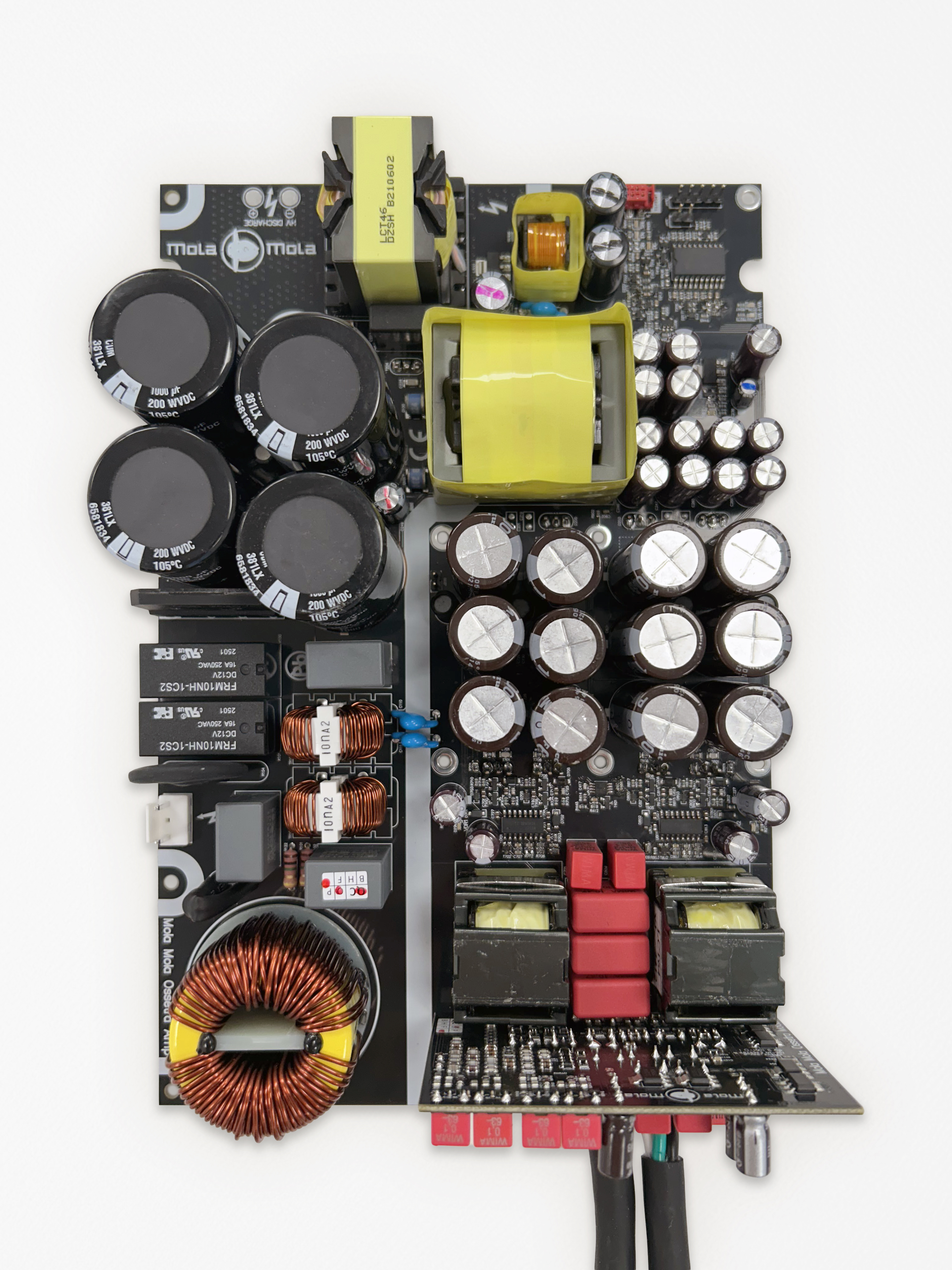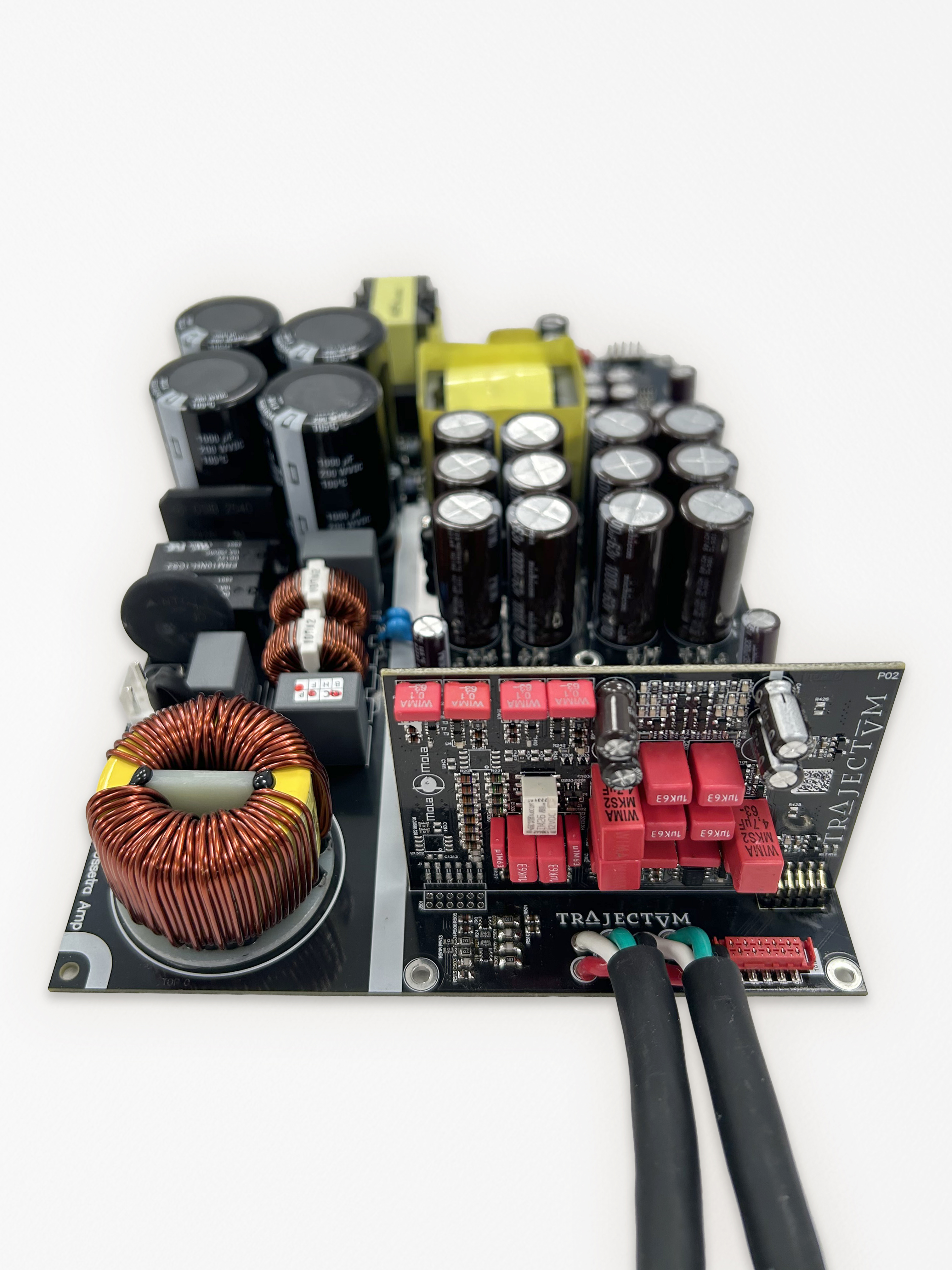Ossetra
the power amplifierTranscending amplifier class
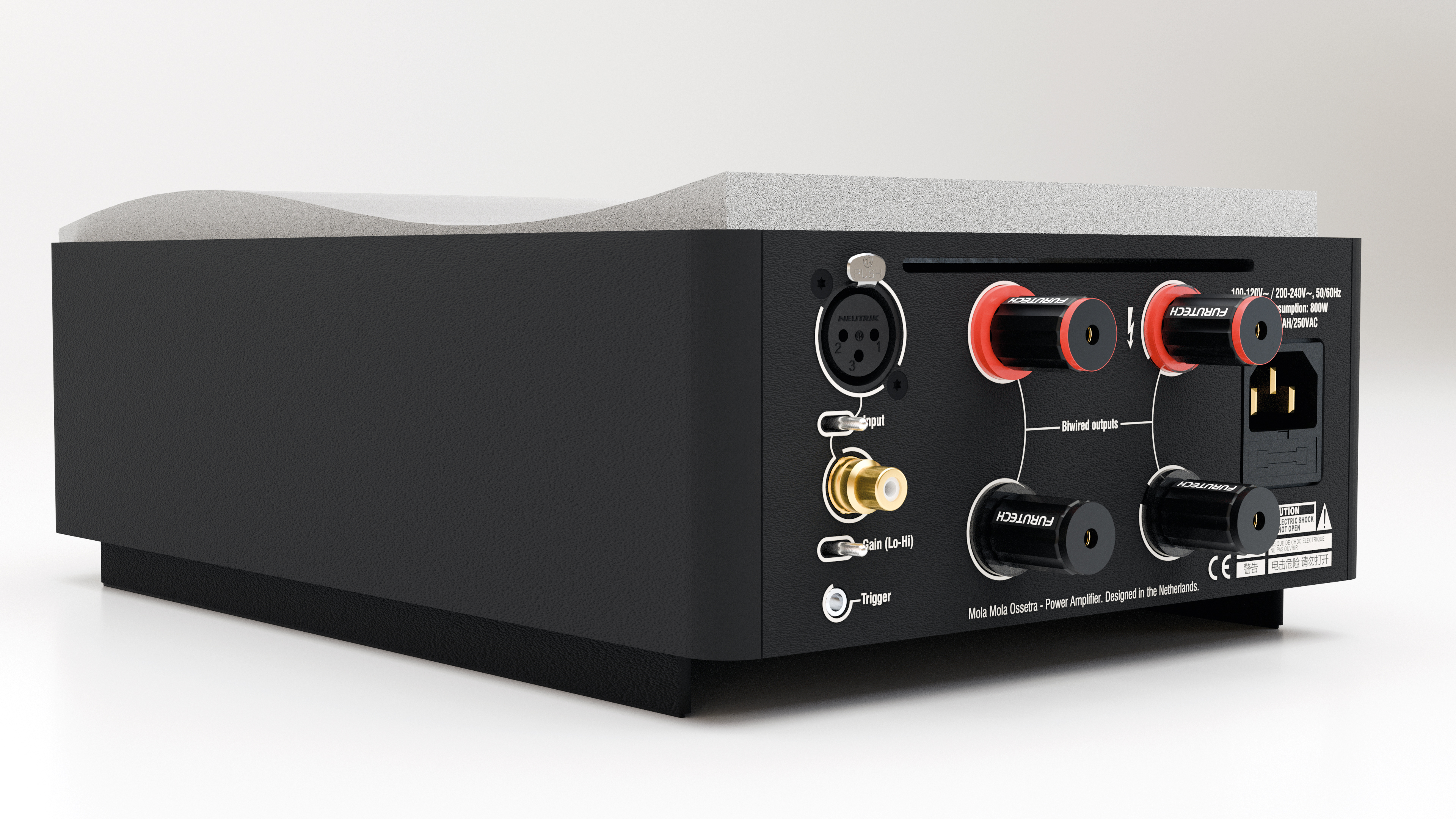
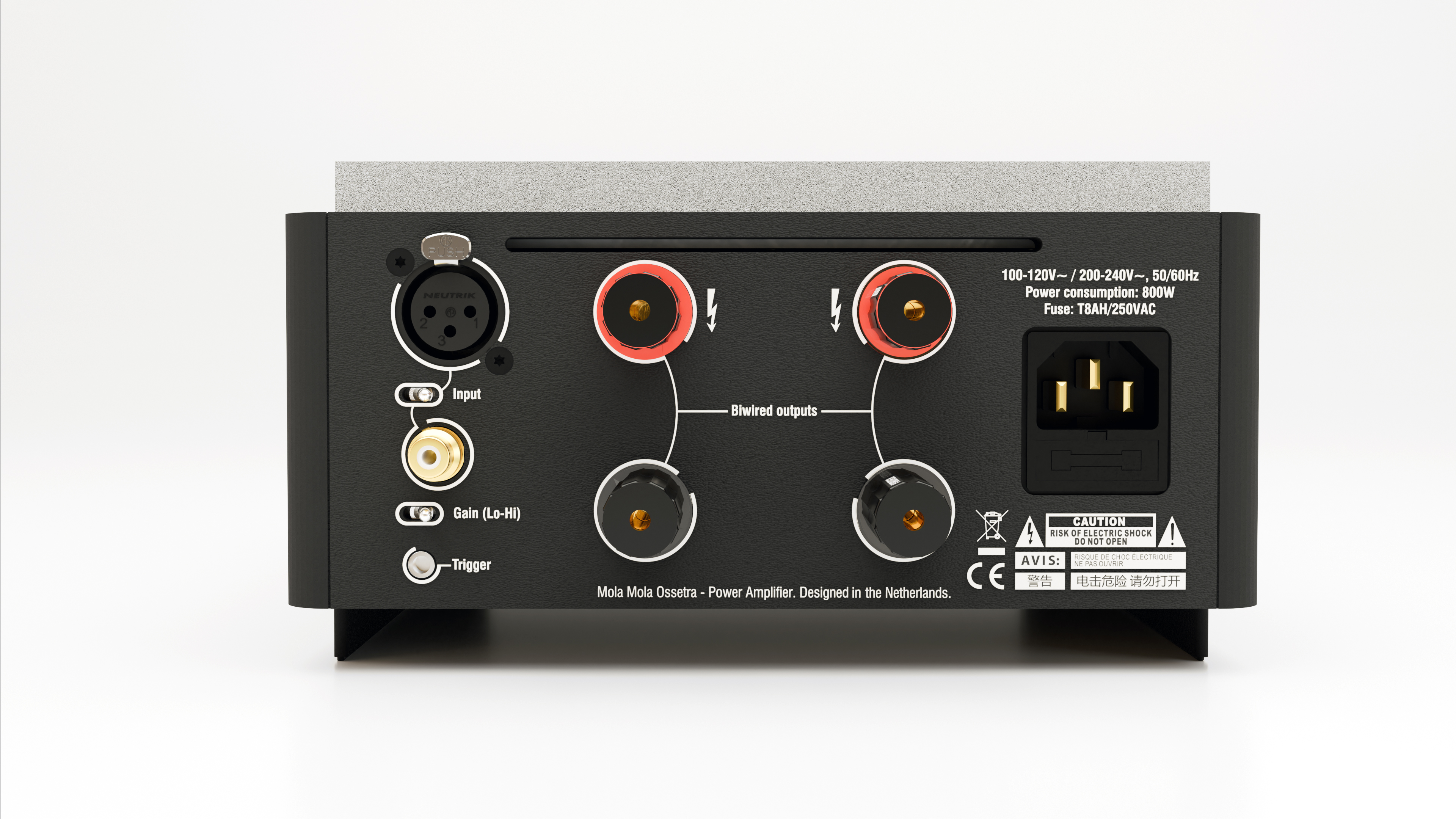
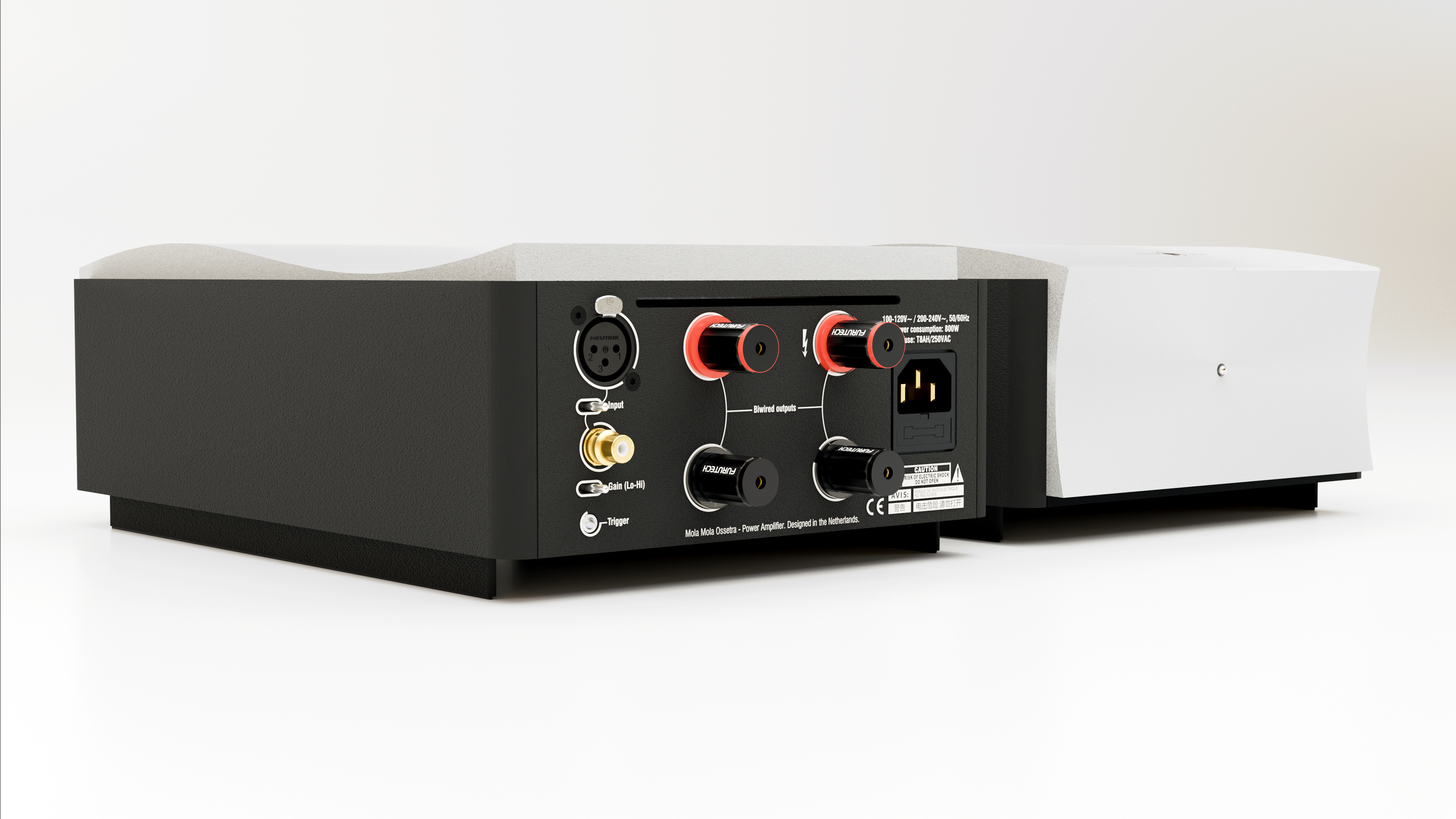
In the years gone by since the original release of the Mola Mola Kaluga power amplifier, we have been working on further improvement of our class D technology. With the Mola Mola Ossetra we have made another significant step in our Proprietary, Mola Mola Trajectum, amplifier technology.
The design of the Mola Mola Ossetra amplifier started from a blank sheet, redesigning every aspect of the amplifier and extending its capabilities beyond the highest expectations.
On the power supply side, next to a significant noise reduction we improved both dynamic and continues output power. Combined with the vastly increased current capabilities of the amplifier output stage, it makes this amplifier able to drive practically any load.
For the Ossetra we designed all new discrete class “A” gain stages, which create most of the gain needed in this high feedback amplifier design. These gain stages are designed to have high open loop bandwidth, individually tailored to their specific tasks in the loop filter. With these new gain stages we have been able to change the gain structure of the entire amplifier without any ill effects. Thus allowing us to optimise noise and distortion performance of the complete system. The resulting amount of feedback around the power stage is where the real difference is.
The Mola Mola Ossetra is a full-bridge power amplifier design, the full-bridge output makes the amplifier design fully balanced from input to output.
For the Mola Mola Ossetra we designed all new discrete class A gain stages. Using these new gain stages enabled us to revise the gain structure of the entire amplifier. This results in exemplary noise and distortion performance of the complete system.
The amplifier bandwidth of over 100kHz, keeps the frequency response absolutely flat within the audio band. The minimal load dependency establishes absolute consistency, irrespective of loudspeaker load.
The input stage distortion is below our current measurement threshold at approximately -150dB (~0,000003%), ensuring an immaculate power stage performance.
Key features
PERFORMANCE
350W/8 ohm, 700W/4 ohm, 900W/2 ohm
Gain: 22dB or 28dB
Unweighted Signal/Noise Ratio: 130 dB Distortion
(THD, IMD): <0.0002 %
(all frequencies and power levels)v
Input Impedance: 300kohm
Output Impedance: <0.0015 ohm (DF>5000), all frequencies
Bandwidth: >100kHz
I/O
Balanced and unbalanced input, selectable by switch
2 pairs of Furutech binding posts.
Biwired directly to the amplifier PCB using
Kubala·Sosna cable.
Trigger input (3.5mm jack)
DIMENSIONS AND WEIGHT
200mm (W) x 110mm (H) x 335mm (D) Depth includes
speaker terminals. 7kg Depth includes speaker terminals. 7kg
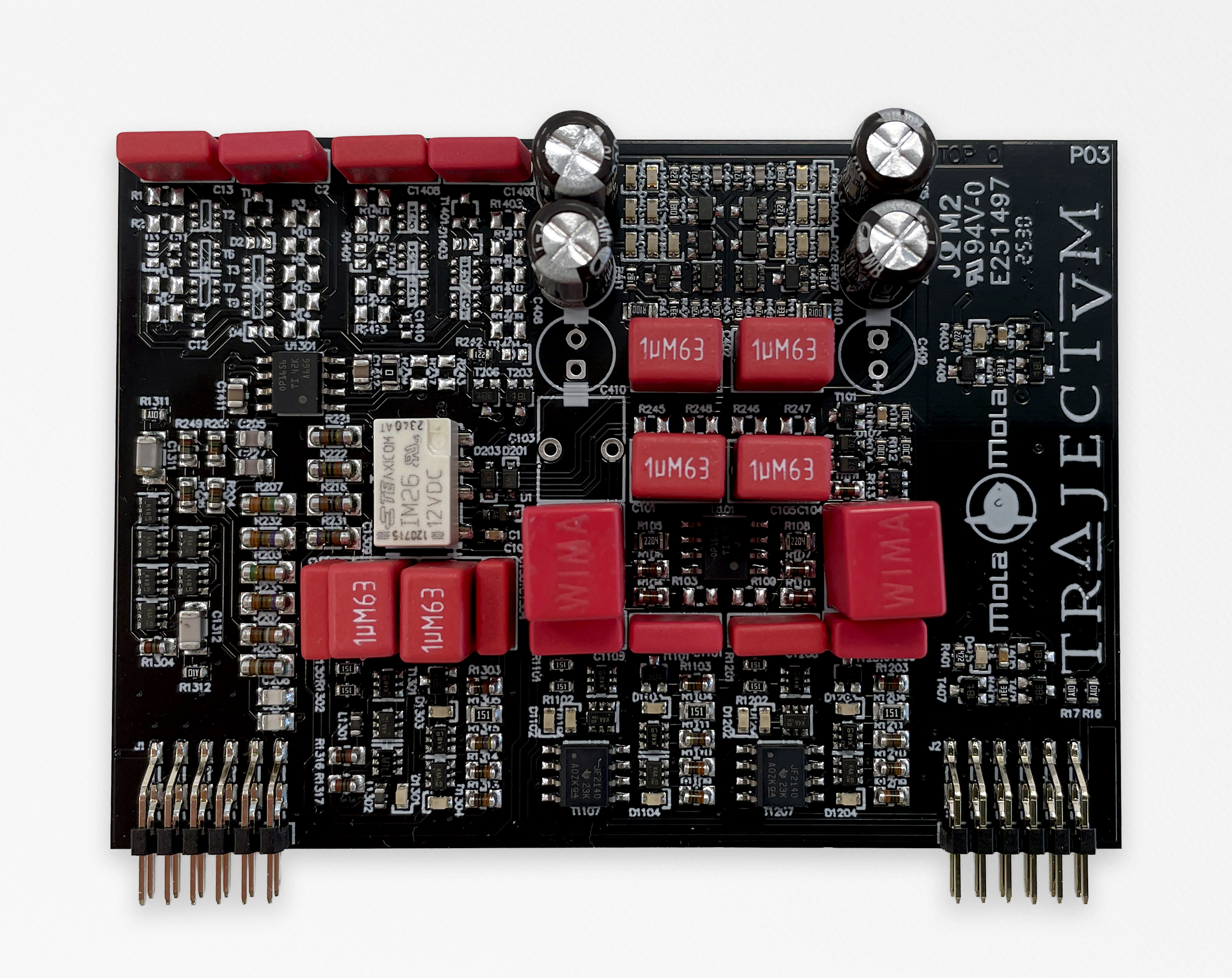
Power supply
Meeting EMI regulations is of course mandatory for electronics equipment. For products with high-end aspirations meeting these regulations is far from sufficient. We set the limits far tighter! With the new power supply this received even more attention, which enabled us to make another step. Next to a significant noise reduction we were able to improve on both dynamic and continues output power. Combined with the vastly increased current capabilities of the amplifier output stage it makes this amplifier able to drive practically any load. Directly related to the main power supply behaviour, is the choice to go for a full-bridge power amplifier design. A full-bridge amplifier is a friendlier and easier load on the power supply, relieving it from some secondary tasks, and making the design less complex. The full-bridge output now essentially makes the amplifier design fully balanced from input to output.
Modulator and feedback system
For the Ossetra we designed all new discrete class “A” gain stages, which create most of the gain needed in this high feedback amplifier design. These gain stages are designed to have high open loop bandwidth, individually tailored to their specific tasks in the loop filter. With these new gain stages we have been able to change the gain structure of the entire amplifier without any ill effects. Thus allowing us to optimise noise and distortion performance of the complete system. The resulting amount of feedback around the power stage is where the real difference is.
Input stage
For the input stage we have also designed new discrete class “A” amplification. The gain stages share some basics with the gain stages further up the signal path, but an input stage has additional requirements. The main tasks for this input stage are to create a high impedance input for the source or preamp, add gain and ensure no DC, or, other signal unrelated noise, enters the power stage.
Control
Our input stages are DC coupled, meaning no capacitors in the signal path which can degrade the sound. In the new input stage we have chosen a similar technique as used in our Makua preamplifier. Here minor DC offsets are corrected and at higher levels a capacitor is placed in the signal path. This is to ensure compatibility with third party products which might not handle this properly further upstream. New shunt voltage regulators are also used in this input stage. These shunt regulators take noise rejection and output impedance to a new level without the need of cascading multiple regulators. Shunt regulators draw constant current from the power supply, this current can go directly to the load when it is needed, or, dissipated in the shunt when the load does not need it. With the shunt located close to the load, this keeps all AC currents local. The wide bandwidth design ensures behaviour of the regulator is constant throughout the entire audio band, making sure it adds as little of its own characteristics as possible.
